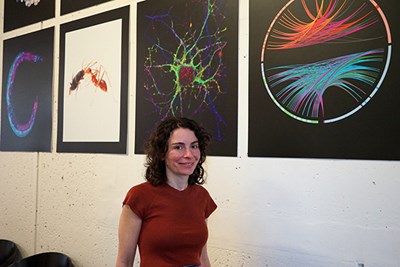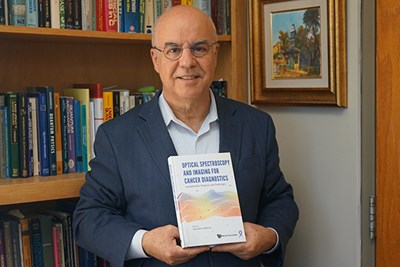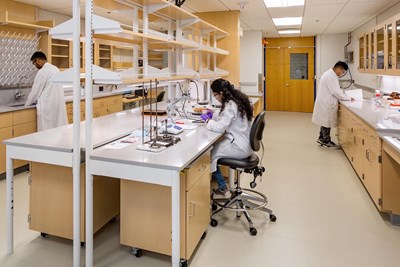Anna Yaroslavsky Helps Develop Light Therapy Protocol for Cancer Treatment Side Effect
 Image by Brooke Coupal
Image by Brooke Coupal
01/23/2024
By Brooke Coupal
Cancer treatments can wreak havoc on the body, but it’s a risk patients take to improve their chances of survival.
One common side effect of cancer treatments is mucositis, a painful inflammation of the mucous membrane that lines the gastrointestinal tract. The condition includes symptoms such as mouth ulcers and abdominal pain, leading to difficulty swallowing, eating and talking. According to the Cleveland Clinic, mucositis develops in up to 50% of patients undergoing chemotherapy and 80% to 100% of patients receiving radiation therapy or stem cell transplants.
Visible and near-infrared light can be used to treat and prevent oral mucositis; however, this light therapy, known as photobiomodulation therapy, can be extremely uncomfortable and time-consuming when delivered inside the affected mouth. Looking to ease the pain of cancer patients suffering from the condition, Physics Prof. Anna Yaroslavsky and a team of researchers have developed a universal protocol for delivering the healing light from outside of the mouth. Their work was funded in part by a National Institute of Dental and Craniofacial Research grant totaling more than $320,000.
“With a universal protocol, every patient can be prescribed the same dose of light to effectively treat oral mucositis,” says Yaroslavsky, who co-authored a paper published in Nature’s Scientific Reports on the team’s findings.
With photobiomodulation therapy, a device emits light toward the affected area, which ultimately prevents or decreases the inflammation of mucositis. Devices that look like popsicles are placed inside the mouth to shine light directly on the mucositis; however, this method can further irritate the inflamed mouth.
“If the condition is already there, then it’s painful to put a device inside the mouth,” Yaroslavsky says. “It’s much easier on the patient if the therapy is delivered outside of their face.”
 Image by NASA
Image by NASA
The challenge with using a light-emitting device outside of the mouth is that the light must pass through skin, fat and muscle tissue before reaching the mucositis. To find the dose of light necessary to treat the mucositis without overheating the tissue, Yaroslavsky implemented a computer simulation to analyze the transport of light through the cheek, lip, jaw and neck. For the simulation, she inputted anatomical data that the researchers gathered from archival MRI images of patients varying in age, gender and skin color.
“The idea behind this was to get a broad range of anatomical features, so we could find a treatment plan that suits all,” she says.
For each MRI patient, Yaroslavsky used a Monte Carlo simulation computer program that she developed to determine the necessary dosage of light and treatment time needed to effectively treat the mucositis. The research team then established a universal protocol for external photobiomodulation therapy by calculating the median dose and treatment time based on the simulation findings.
The protocol simplifies the approach to external photobiomodulation therapy for medical professionals while making it more accessible for patients.
“You could image every patient and run simulations to determine the appropriate dose, but then it will be very expensive,” Yaroslavsky says. “Not every clinic has MRI scanners, and not everyone is covered by insurance. The universal protocol is something every patient can be prescribed, like how aspirin is given in the same dose no matter a person’s body type or gender.”
Yaroslavsky adds that their findings go beyond external photobiomodulation therapy and oral mucositis.
“The study proves that we don’t need to run thousands of clinical experiments to come up with viable treatment plans for different diseases,” she says. “We can do so by analyzing archival data and running simulations, saving a lot of money and time while helping patients.”



